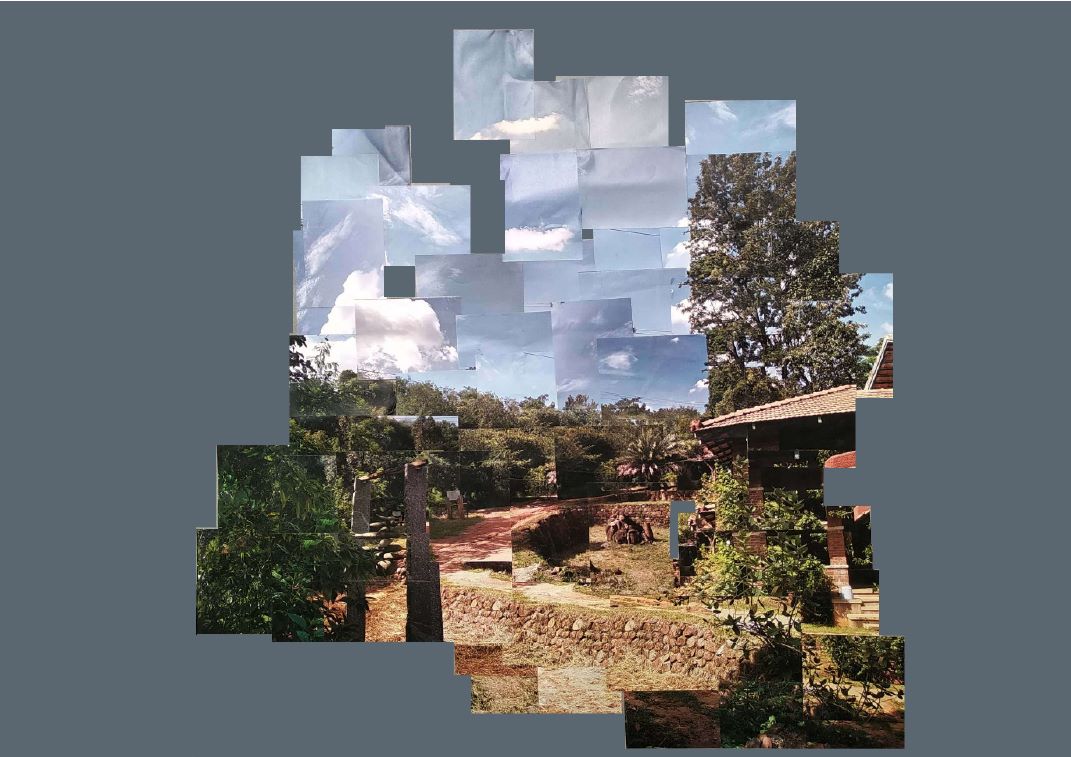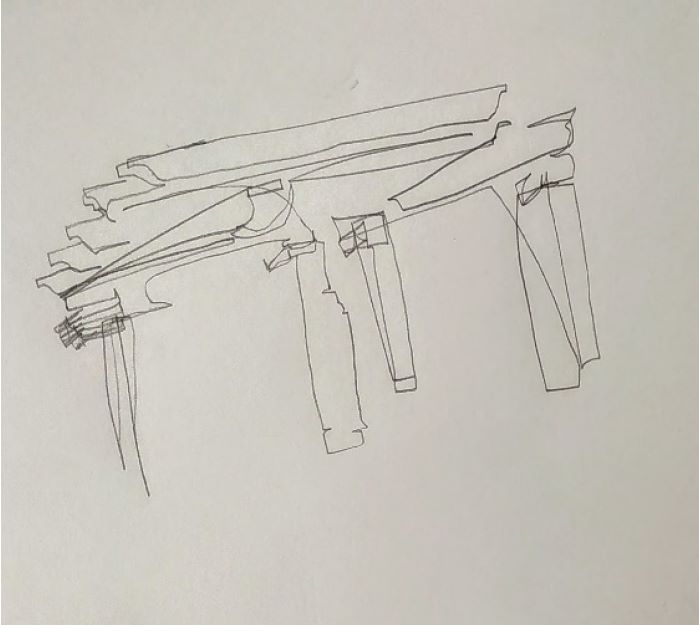Hockney Explorations
Where It All Began
I studied the work of David Hockney as a part of my Form and Structure class. The aim was to study and imitate his work using my own resources around me. Not only did I study the artist’s work, but also explored the art of contour drawing – a practice that determined hand-eye coordination as well as focus levels. The final goal was to place my attempts at Hockney’s work process along with the contour drawings of the same place. This included practising the same landscape or object again and again to develop confidence in my hand movements.
All the pictures required depth, different planes, and interesting placement of objects. The first landscape I chose for my assignment showed continuity and was quite spacious. Once I took pictures of each segment, I printed them out and placed them all together. Forming a composition similar to Hockney’s was interesting, I had to pay attention to small details and work on incorporating all that I had learnt about my previous errors. Finally, after sticking all the pictures together, I completed my first attempt at imitating Hockney’s work.

The Park
This composition was my first attempt at the Hockney exercise. I took images in one of parks situated in Yelahanka. There were certain aspects which I hadn’t thought through, such as how underexposed some pictures were. Most of my images were dark and did not highlight the features of the fragments, therefore the entire composition looked dull. In contrast to Hockney’s work, which was bright and colourful, my work lacked vibrancy as well as the complexity of many objects placed together to form an image which had depth and completion.
The Pool
I chose to take photographs of a swimming pool with a park in the background. Surrounding the pool were trees and grass. I noticed that while doing the project, I had made the mistake of creating two very distinct aspects in the composition – the swimming pool and the park in the background were primarily the same size, even though the park was situated in the background and naturally was supposed to look smaller in size due to the distance it was situated in. I misjudged the proportions of the two components which resulted in a stark difference and no continuity between them, even though the fragments of the swimming pool and park individually showed continuity. The angle perception was lacking. There was a stark difference in the angles of some of the pictures that I had included


The Outdoors
I tried choosing an adequate place to click my photographs and also incorporated depth into the composition. I had also included ample space into my work, which gave the viewer a rather spacious view of the composition. I was able to include the distinct lines of geometry by including a roof and a stone structure as well as curvilinear lines as shown in the dirt path. A couple of mistakes that were noticed was that some areas were still quite underexposed and some areas seemed too well built up in terms of continuity. For example, one particular tree appeared almost straight with a perfect shape and that connected too perfectly with the roof below it. The element of discontinuity was absent in that area.
The Contours
The many integral aspects of contour drawing included a number of things which we were to keep in mind while performing the exercise, lest we thought it useless. Some aspects were that it captures eye movement while drawing, and one is able to gauge whether the image or composition is interesting, giving a better sense to the viewer. The inner structure or the backbone of the image is captured with contour drawing.
A contour drawing is never complete and is only a replication of what the eye sees in the simplest form. It is an outline of the subject of interest. It shows flow in the drawing.
They also give a sense of imperfection to the image which is important when taking photographs, it helps give an idea of how one wants to take the photographs and compose them.

Learning how to take photographs and combining each fragment together to form an image similar to the style of Hockney was more than what met the eye.
When I first saw Hockney’s work, I thought what he had done was fairly simple and did not involve any complicated process. Once I began analyzing each of his images and appreciating the thought process behind them, I realized how much energy and work had been put into something that looked so simple to me when I first saw his work. I appreciated his style more after I had experienced the process behind it myself.
Photographs capture a certain slice of what the human eye is unable to see. The human eye sees images with depth and in three dimensions, which is different from what photographs capture (two-dimension images). The complex interplay between peripheral vision and point of focus is what the artist has tried to capture in his work. It is a play between the image captured by a camera and human sight.
Contours
I had explored with contour drawing before, but never made it a practice to continue it. my first attempt truly reflected how new this was all for me, even if I had done this before. Contour drawing requires serious attention to the object of interest, focus on the pressure of the hand while it draws the lines, no repetition of lines but rather a smooth continuation of the same line and a sense of placement of the objects I was seeing. My first attempts reflected shabby line pressure and I even lifted my pencil in some cases. After trying more objects, I began getting confident with my line strokes, I paid more attention to the objects and was able to form an accurate shape which somewhat resembled the real items.


4 Pieces
Materials used: Collage on chart paper
